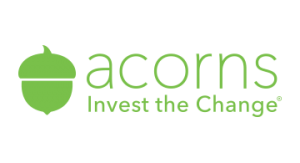

If you are like most people, the size of your retirement nest-egg is probably some hazy number that you don’t have a precise handle on.
Looking far out to the future it can be hard to picture what amount you need to retire comfortably. After all, how do you build up a retirement account large enough to support your golden years when it feels like a struggle day-to-day to squirrel away a few nuts for a rainy day?
It turns out you can take some simple steps to automatically build up your retirement accounts so that you can be confident you will have enough and still not have to give up your daily coffee.
Save Today, Spend Tomorrow
The good news about retirement planning is that you might not need quite as much as you think you do.
One reason for this is that when you earn an income, you pay taxes that will generally be lower in retirement years.
You probably also allocate money to savings for retirement, which you no longer need to put aside for the future.
Plus, many costly expenses, such as paying for kids or education, tend to be in the past.
So, when you think about how much you need to live on in retirement to enjoy a similar lifestyle, it’s probably not the same amount you earn annually today.
A good rule of thumb is that you will need 75-85% of your annual salary to keep your quality of life similar.
SAVINGS GOAL
Just because you might not need the same amount in your retirement years to live a similar lifestyle as you do today doesn’t mean you should rest on your laurels when it comes to savings.
The most important step is to create a retirement savings goal. You want a number to aim at which you can target as part of your smart retirement planning strategy.
If you are not sure how to do that, this article on how much you should have in your 401(k) is a good primer.
When you arrive at a savings goal number, you might have the sinking feeling that it seems out of reach because it is so large, but hang tight!
This retirement planning for dummies guide is designed to find easy ways to build up a nest egg, so you don’t have to fret (at least not yet!).
When you break down the savings goal into monthly savings targets, retirement planning becomes a whole lot easier.
Pay Yourself First
An unavoidable fact of life as a hardworking employee is the government pays itself first. Perhaps the largest “expense” you pay out of pocket each year is payroll taxes.
But after the government has taken its “pound of flesh”, you control how you allocate the remainder of your money.
The simpler way to allocate money is to first start with your bills: rent or mortgage, food, phone bills, utilities and so on.
At the bottom of most people’s lists is: save for retirement. But what if you reversed the order?
What if saving for retirement became the first thing you allocated money to each month, and everything else came afterwards?
A common objection from most people is that there is not enough money to pay for bills and fund retirement.
But what if you had no choice? By forcing yourself to commit to saving for retirement first, your mind is obligated to think of creative ways to pay the other bills if your current salary is not sufficient.
To make sure you are growing your retirement nest egg monthly, you have two choices:
- Grow your income
- Cut your costs
GROW YOUR INCOME
Some ways to make money over and above your salary include:
- Take a job in the sharing economy – think Uber, Lyft, Fiverr
- Grab a weekend or part-time job to save an extra few bucks for retirement
- Start a part-time business selling goods on Amazon or Ebay, or any other home business that you can do after work
- Rent out the spare bedroom on AirBnb to make a little extra income
- Sell unused goods around the home on Craigslist or LetGo
CUT YOUR COSTS
Increasing your income takes some ongoing effort usually but cutting costs can be done quickly and easily. Here are some ways to save money right away.
- Negotiate lower bills with cable, phone, insurance and utility companies
- Make smart rather than dumb purchases – get the new phone when you need one, not when the latest version is released
- Use Google Maps to scan your local area for the cheapest gas prices when needing to refill
- Lower your credit card costs by transferring balances
- Unplug unused electrical devices
- Get rid of the club memberships you don’t use actively
- Eat at home more often and indulge less in eating out
Growing your income and cutting your costs may not make a big difference in any single month but over time the small changes compound into a large amount.
If increasing your income and cutting costs seems like uphill sledding, you should seriously consider companies that make automatic savings and investing easy.
We could be facing one of the harshest economic challenges ever experienced thanks to an incompetent government and severe global unrest. If you aren't proactive, you could see yourself and your family become another financial casualty. But, the Inflation Survival Plan has you covered. Learn insider tips and tricks, IRS loopholes and more that will help your finances soar.
Take 15 Seconds to get the FREE Inflation Survival Plan and ensure your family's financial security.
Save And Invest Automatically
One of the easiest ways to pocket a little extra money each month is to save on every purchase you make.
How do you do that?
Simple. Link your credit cards to companies that specialize in automatically rounding-up purchases you make to the next dollar and then auto-deposit the loose change in an investing account.
SAVE AUTOMATICALLY
Among the most successful companies who allow you to squirrel away money without having to hardly lift a finger after setup is Acorns.
| ACORNS SPOTLIGHT | |
 InvestorMint Rating 4.5 out of 5 stars |
via Acorns secure site |
Acorns is free for college students, no deposit is required to set up an account, savings are made automatically and if you want to add to your nest-egg through lump sum deposits you can. Plus, fees are generally low and in line with what many robo advisors charge.
INVEST AUTOMATICALLY
Squirreling away loose change will add money to your retirement nest egg that may otherwise have been spent elsewhere on goods and services without you even noticing. But you will probably need to invest more each month to have enough for retirement.
In this retirement planning for dummies guide, easy wins are our goal and one that makes a lot of sense is called Smart Deposit from one of the leading robo advisors, Betterment.
| BETTERMENT SPOTLIGHT | |
InvestorMint Rating 5 out of 5 stars |
via Betterment secure site |
The Smart Deposit feature allows you to sweep unused cash from your bank account into an investing account that targets a financial goal.
The way it works is that you specify how much you need to pay for monthly expenses and unused cash above that threshold is automatically invested on your behalf.
Betterment has accumulated billions of dollars in assets as a leading robo advisor, and offers customers lots of benefits designed to pay off over the long term too, such as:
- Tax loss harvesting to help lower your tax bill
- Tax coordinated portfolios to view your portfolio holistically
- Human advice available to clients of higher tier services
- Low deposit and account minimums to get started
➤ Free Guide: 5 Ways To Automate Your Retirement
Max Out Your 401(k) And IRA
If you are not putting money into a 401(k) or IRA, the best advice for the long term is to start right away!
The reasons are simple. You get to lower your tax bill and you get to build your nest egg right away.
For example, if you put $10,000 into an IRA or 401(k) account, you get to lower your adjusted gross income by that same amount.
If you were taxed on $100,000 in earnings beforehand, now you will be taxed on $90,000.
ANALYZE YOUR 401(k) PLAN FREE
401(k) plans are often restrictive in limiting your investment options. Sometimes you can only invest your money in a select range of mutual funds or index funds as opposed to a broader range of securities.
IRA plans generally allow you more flexibility to invest your money as you might wish. A universe of lower fee index funds and stocks can be chosen to avoid the high expense ratios that often come along with mutual funds.
To figure out what fees you are paying in your 401(k) plan, Blooom can help you.
Blooom automates investment management for employer sponsored retirement plans. For a low monthly fee, Blooom assesses your 401(k), rebalances it automatically, and manages your nest egg on your behalf.
| BLOOOM SPOTLIGHT | |
 InvestorMint Rating 4 out of 5 stars |
via Blooom secure site |
If you have the flexibility to rollover your 401(k) to an IRA, it’s well worth your time to explore that option.
But even if you cannot rollover your 401(k), ask your employer’s HR department whether you can split up your direct deposit so that some portion goes to your IRA and some goes to your bank account – the net result is to mirror your 401(k) contribution.
What savings tips do you have to prepare for retirement better? Share your tips below, we would love to hear from you.
>> Find Out How To Rollover A 401(k) To An IRA
>> How Much Should Be In Your 401(k)?
>> What Are The Best Retirement Plan For Independent Contractors?
We could be facing one of the harshest economic challenges ever experienced thanks to an incompetent government and severe global unrest. If you aren't proactive, you could see yourself and your family become another financial casualty. But, the Inflation Survival Plan has you covered. Learn insider tips and tricks, IRS loopholes and more that will help your finances soar.
Take 15 Seconds to get the FREE Inflation Survival Plan and ensure your family's financial security.









